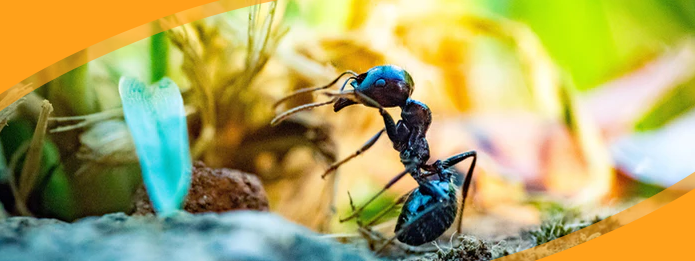5 Surprising Things You Didn’t Know About Carpenter Ants

If you’ve ever seen an ant that looked as if it’s on steroids, chances are you saw a carpenter ant. Carpenter ants get their name from the fact that they create their colonies out of materials they take away from damaged or damp wood. While alarming to look at, carpenter ants do not pose a threat to the health and safety of your or your loved ones — that is unless they’re sourcing materials from your home.
To extract the materials they need to make their colonies, carpenter ants literally bite off chunks of wood, chew it up and spit it out wherever it’s needed. Though they work slowly, a carpenter ant infestation that is allowed to continue to eat your home can cause significant structural damage. To prevent costly damage, it is essential that you contact a carpenter ant control professional as soon as you discover signs of infestation. To better understand this oversized ant, check out these five surprising (and sometimes impressive) facts about them.
1. They Are Big
If you’ve seen a carpenter ant for yourself, you already know that this species of insect is big. How big, though, can they really get? The average worker carpenter ant can measure between 6.5 mm and 13 mm in length. The winged queen, however, is triple to quadruple the size of her subjects, at between 20 and 25 mm in length. As if an ant that is as long as a quarter isn’t alarming enough, these critters also have large jaws that are strong enough to munch on damp wood.
2. They Are Strong
Ants of any type are strong, but carpenter ants have noteworthy strength. The carpenter ant can lift up to 50 times its weight. To put this into perspective, this would be equivalent to you lifting a small car with your teeth.
3. They Are Biters
Though rare, carpenter ants have been known to bite. In addition to the initial pain of being bitten by their strong jaws, you will also feel a burning sensation. This indicates that the ant has injected the wound with formic acid, which can burn the outer layer of the skin. Some species of carpenter ant explode after biting. Though this all sounds alarming, know that most human reactions to carpenter ant bites tend to be mild.
4. They Are Predators
To be clear, carpenter ants do not eat the wood they source for their colonies. Rather, they subsist off of other insects, both alive and dead, syrup, jelly, sugary liquids, nectar, grease, meat and fat. They also take a liking to dog food, so if you want to protect your pet from experiencing a nasty bite to the mouth, keep its food off the ground.
5. They Leave Clues
A carpenter ant infestation is hard to miss. Aside from the obvious (the presence of very large ants), you may notice piles of what appears to be debris. That debris typically consists of a mixture of wood shavings, dead ants and dead leaves. You may also hear a rustling in your walls or rafters, which is the sound of the ants munching on your wood structures. Finally, when and if you notice winged ants, you can rest assured that the colony is well established. An established colony typically consists of 2,000 to 3,000 worker ants and can pose serious problems to your home’s structure if not eradicated immediately.
Canada’s Carpenter Ant Control Professionals
Eliminating and preventing carpenter ant populations is extremely difficult even with professional help. Truly Nolen uses multiple treatment techniques and services to ensure the successful eradication of carpenter ant colonies. This includes finding and removing all of the nests, closing up any cracks, gaps or openings, and advising homeowners on what more they can do to keep the critters away. To learn how we can help preserve the integrity of your home, call to schedule your free inspection today.